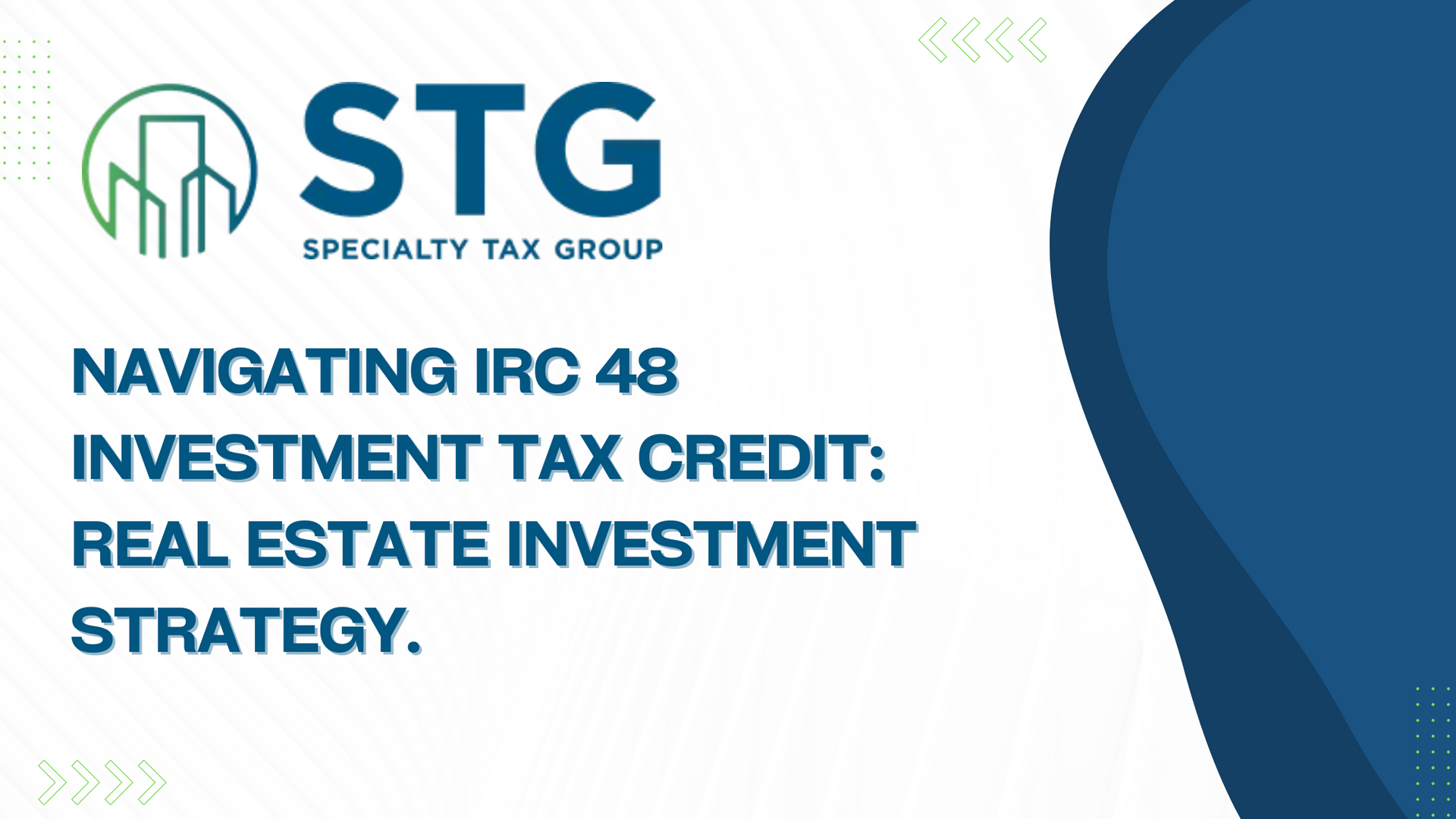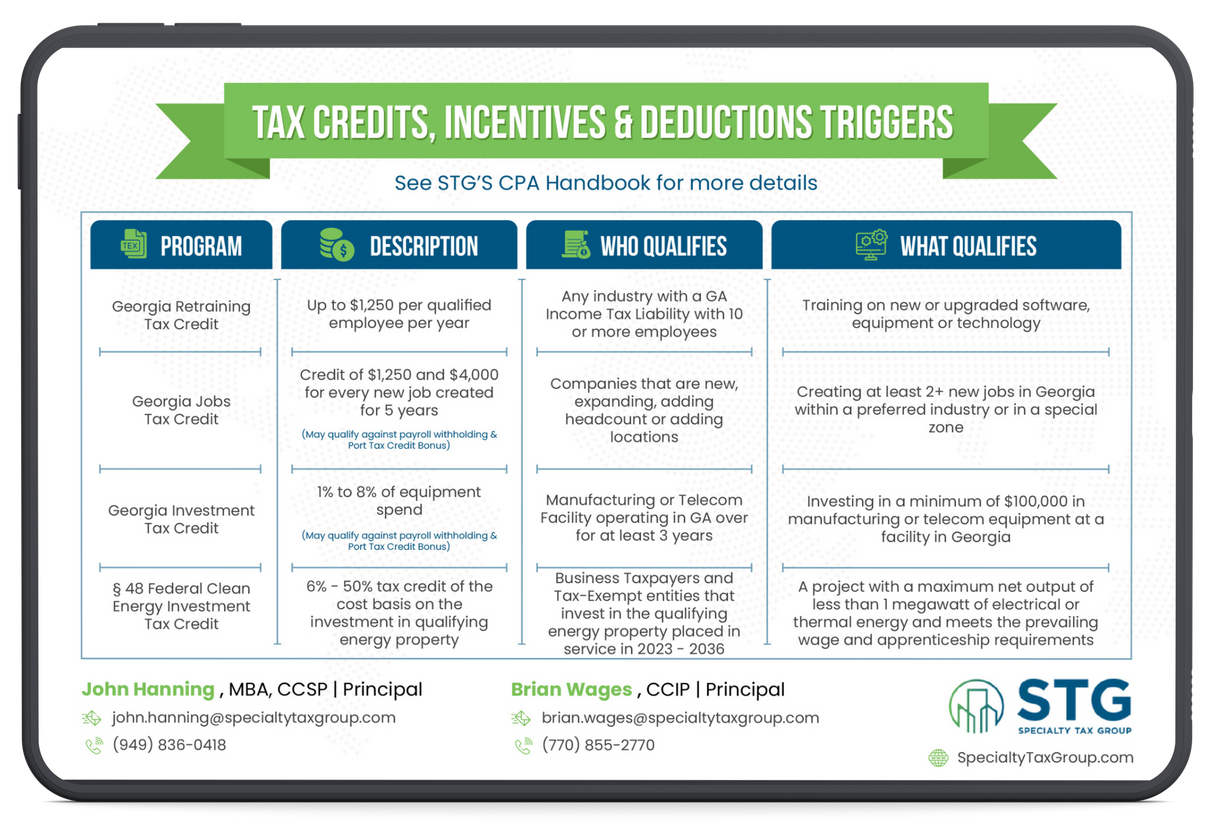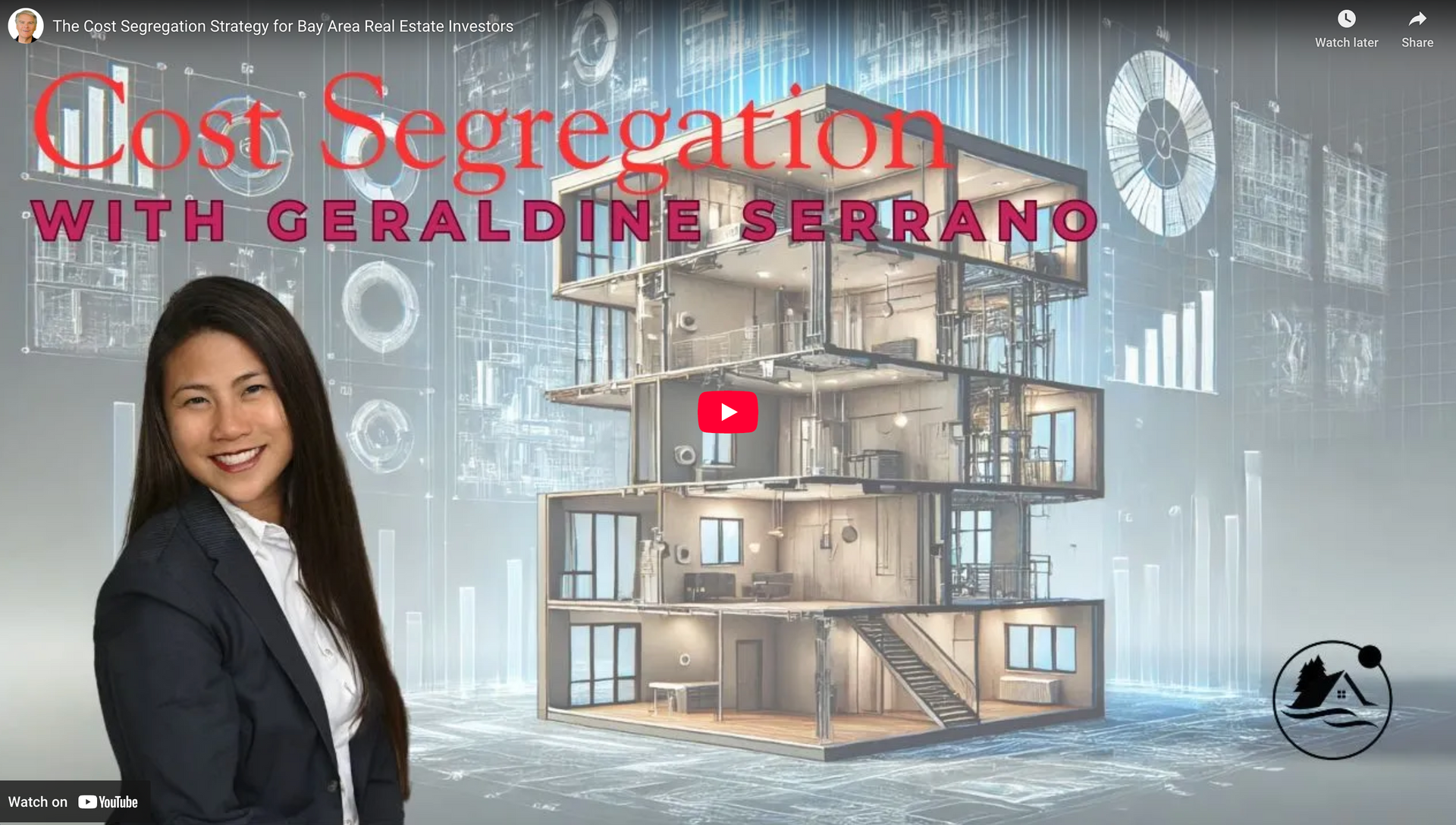This blog post has been researched, edited, and approved by John Hanning and Brian Wages. Join our newsletter below.
Newsletter Form
Thank you for joining our newsletter. We will email you the latest updates every other Thursday at 12pm.
Please try again later.

Key Takeaways
- The IRC 48 Investment Tax Credit offers tax benefits from 6% to 50% for property owners using renewable energy systems
- Eligible properties include solar, geothermal, fuel cells, energy storage, and other renewable systems
- Strategic implementation through new development or retrofitting boosts investment returns
- Combining these credits with cost segregation studies multiplies tax advantages
- Recent IRS regulations have clarified definitions for qualifying energy property
Understanding the IRC 48 Investment Tax Credit
The IRC 48 Investment Tax Credit (ITC) encourages the adoption of renewable energy in real estate. Unlike deductions that reduce taxable income, this credit directly cuts tax liability dollar-for-dollar based on qualifying renewable energy equipment costs.
Quantifying the Tax Credit
Currently, base credit rates start at 6% but can reach 30% when meeting prevailing wage and apprenticeship requirements. There is an additional domestic content 10% bonus for use of US materials such as steel, iron, or manufactured product. Another 10% bonus can be added for properties in an “Energy Community” for a total possible of 50%.
- Final Regulations Issued: The IRS and Treasury have released regulations clarifying energy property definitions and credit rules
Qualifying Property Types
The credit applies to virtually any real estate type with qualifying energy systems:
- Commercial buildings
- Multifamily housing
- Industrial facilities
- Office buildings
- Retail properties
- Hotels and hospitality
Energy Property Requirements
Eligible energy property now includes:
- Solar energy equipment
- Geothermal systems
- Energy storage technologies
- Waste energy recovery property
- Combined heat and power systems
- Qualified biogas property
- Microgrid controllers
According to IRS regulations, energy storage technology co-located with qualified facilities can claim Section 48 credits.
Strategic Implementation in Real Estate
New Development and Retrofitting Projects
For new construction, renewable energy systems can be built in from the ground up, following a strategic timeline from design through installation and claiming the credit.
For existing properties, the credit applies to renovations adding qualifying energy systems. A thorough cost-benefit analysis should consider current energy costs, available space, structural considerations, and possible local incentives.
Advanced Tax Strategies
Combining with Cost Segregation Studies
Pairing IRC 48 credits with cost segregation studies creates powerful tax advantages:
- Cost segregation speeds up depreciation deductions
- The combined effect of credits and accelerated depreciation greatly improves project economics
- Can cut payback periods by 50% or more compared to energy savings alone
For more on how cost segregation works with renewable energy investments, see our cost segregation guide.
Direct Payment and Credit Transfer Options
The Inflation Reduction Act allows:
- Some taxpayers to claim cash payments instead of tax credits
- Transfer of credits to unrelated taxpayers
- As of March 2024, over 500 entities had registered for these options
Compliance and Risk Management
Maintaining Compliance
Both IRC 48 and new Section 48E credits have a five-year recapture period. Under 48E, credits can be recaptured if a facility exceeds greenhouse gas emissions of 10 grams CO2/kWh within five years after being placed in service.
Events triggering recapture include:
- Selling energy property
- Stopping qualified use
- Changing use to non-qualifying purposes
Documentation Requirements
Thorough documentation is essential and includes:
- Technical specs proving system eligibility
- Cost segregation between eligible and ineligible expenses
- Evidence of placed-in-service dates
- Proof of system operation
- Domestic content documentation for bonus credits
2025 Program Changes
The application period for the 2025 low-income communities bonus credit program opens January 16, 2025, and closes August 1, 2025. This gives an additional 10-20% credit for applicable energy facilities under 5 megawatts.
The IRS has redesigned Form 3468 to support provisions created by the Inflation Reduction Act, with separate forms needed for each facility or property.
Conclusion
While IRC 48 is moving to new frameworks, renewable energy tax credits remain powerful tools for real estate investors.
To maximize these benefits, investors should:
- Plan early in development
- Get specialized expertise
- Consider entity structure carefully
- Keep meticulous documentation
- Integrate planning with other tax strategies like cost segregation
For guidance on leveraging these tax credits in your real estate investment strategy, contact our team of experts who can help navigate renewable energy tax incentives.
2024 Tax Guide
Have A Question?
Contact us today and our friendly team will reach out as soon as possible.
All Rights Reserved | Specialty Tax Group | Powered by Automationlinks | Privacy Policy





